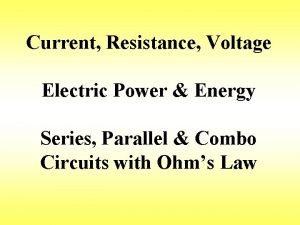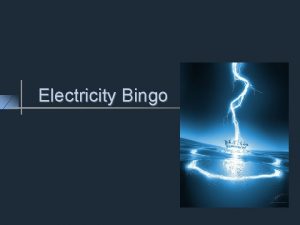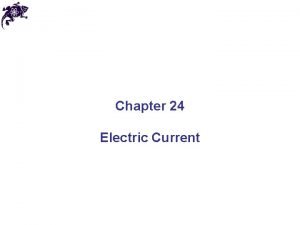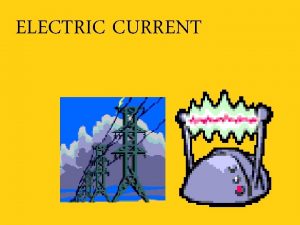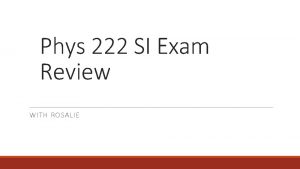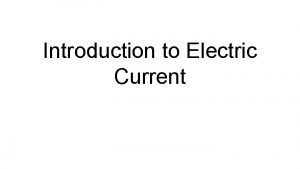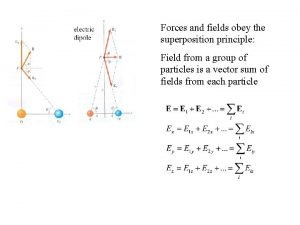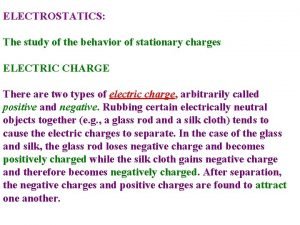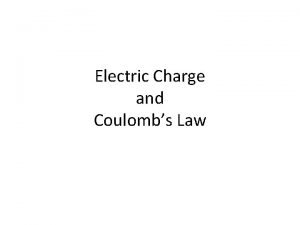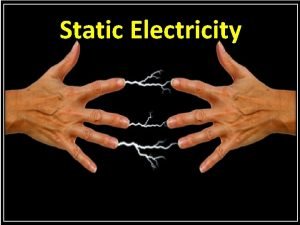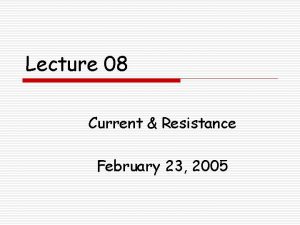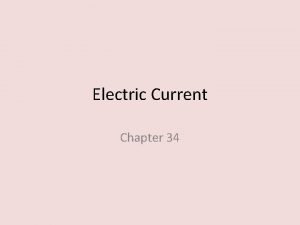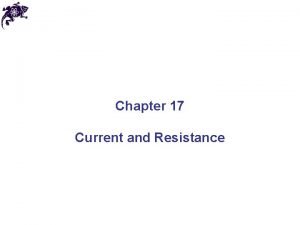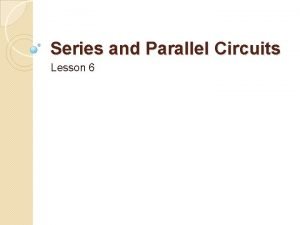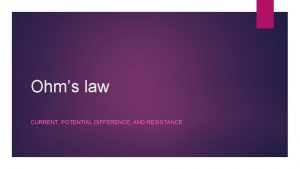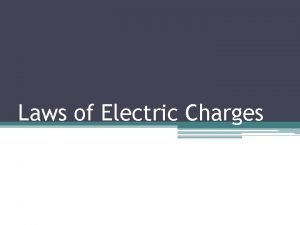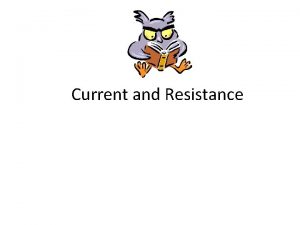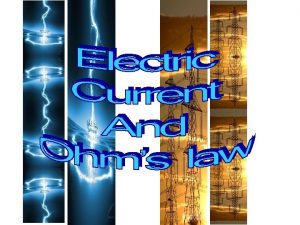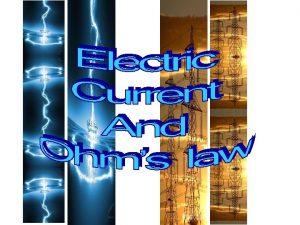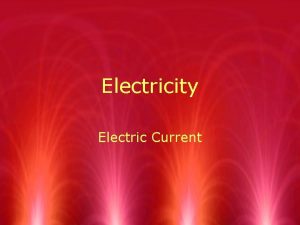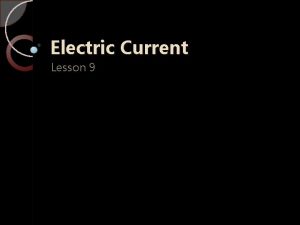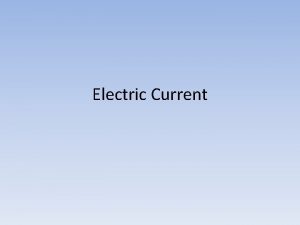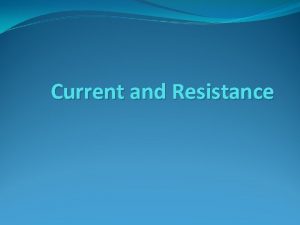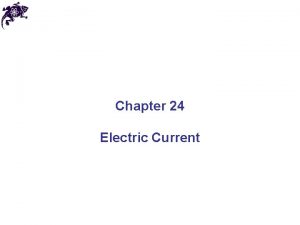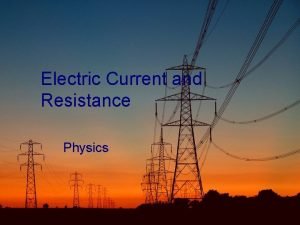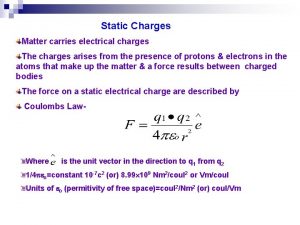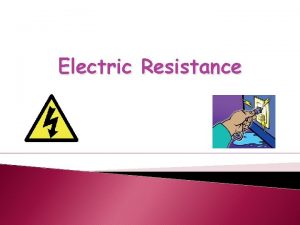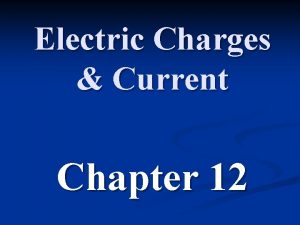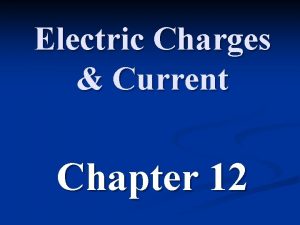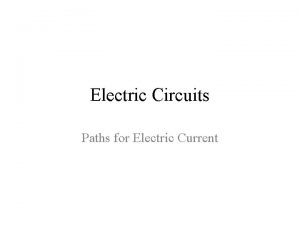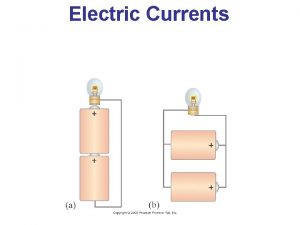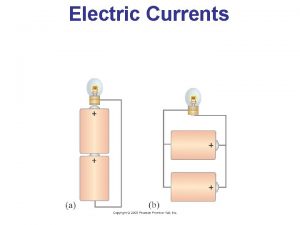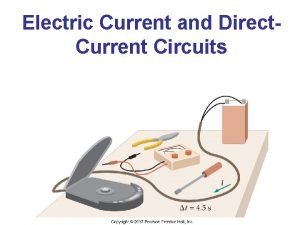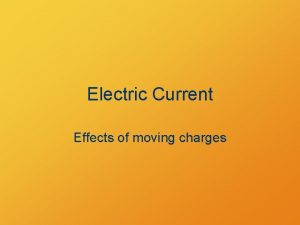Chapter 28 Current and Resistance Moving charges Electric

























- Slides: 25

Chapter 28 Current and Resistance 第二十八章 電流及電阻

Moving charges

Electric current The current is the rate at which charge flows through this surface. The direction of the current is defined to be the direction of the positive charge flow. However, in metals, electrons flow in the opposite direction of the current.

Definition and unit of current The unit of current is called the ampere (A): Current is a scalar, even though we often use an arrow to indicate the current flow directions in wires. i 0 i 1 i 2

Sample problem 1 Water flows through a garden hose at a volume flow rate of 450 cm 3/s. What is the current of negative charge? Ans: 2. 42 107 A = 24. 1 MA

Current density If the current density is uniform: If the current density is also normal to the surface:

Drift speed

Sample problem 2 (a) The current density in a cylindrical wire of radius R = 2. 0 mm is uniform across a cross section of the wire and is J = 2. 0 105 A/m 2. What is the current through the outer portion of the wire between radial distances R/2 and R? (b) Suppose, instead, that the current density through a cross section varies with radial distance r as J = ar 2, in which a = 3. 0 1011 A/m 4 and r is in meter. What is the current through the same outer portion of the wire? (a) 1. 9 A; (b) 7. 1 A.

Sample problem 3 What is the drift speed of the conduction electrons in a copper wire with radius r = 900 m when it has a uniform current i = 17 m. A? Assume that each copper atom contributes one conduction electron to the current and the current density is uniform across the wire’s cross section. Ans. vd = 4. 9 10 -7 m/s.

Resistance

Ohm’s law or Georg Simon Ohm (1789 -1854)

I-V curves Ohm’s law


Color coding for resistors

Variation with temperature where T 0 is a selected reference temperature and ρ0 is the resistivity at that temperature. Usually T 0 = 293 K, for which ρ0 = 1. 69 10 -8 ·m for copper.

Sample problem 4 A rectangular block of iron has dimensions 1. 2 cm 15 cm. A potential difference is to be applied to the block between parallel sides and in such a way that those sides are equipotential surfaces. What is the resistance of the block if the two parallel sides are (1) the square ends, and (2) two rectangular sides.

A microscopic view

A microscopic view of Ohm’s law

Sample problem 5 (a) What is the mean free time between collisions for the conduction electrons in copper? (b) What is the mean free path between collisions for the conduction electrons in copper, assuming that their effective speed veff is 1. 6 106 m/s? (a) (b)

Power in electric circuits

Sample problem 6 A length of heating wire, made of nickel-chromium-iron alloy called Nichrome, has a resistance R of 72 . At what rate is the energy dissipated in each of the following cases? (1) A potential difference of 120 V is applied across the full length of the wire. (2) The wire is cut in half, and a potential difference of 120 V is applied across the length of each half.

semiconductors

superconductors

Levitation with superconductors

Home work Question (問題): 12, 15, 16 Exercise (練習題): 5, 11, 15 Problem (習題): 14, 38, 40, 42
 Electric charges and electric forces lesson outline
Electric charges and electric forces lesson outline How to find r total in a parallel circuit
How to find r total in a parallel circuit Like charges blank and opposite charges blank
Like charges blank and opposite charges blank Chapter 21 electric charge and electric field
Chapter 21 electric charge and electric field Chapter 21 electric charge and electric field
Chapter 21 electric charge and electric field K constant unit
K constant unit Chapter 21 electric charge and electric field
Chapter 21 electric charge and electric field Filtration formula
Filtration formula Force of air resistance
Force of air resistance Current is the rate at which charges move through a(n)
Current is the rate at which charges move through a(n) Net movement of electric charges in a single direction
Net movement of electric charges in a single direction The figure shows three electric charges labeled
The figure shows three electric charges labeled What is the continuous flow of electric charge?
What is the continuous flow of electric charge? Electric field due to system of charges
Electric field due to system of charges Study of stationary electric charges is
Study of stationary electric charges is Origin of charge
Origin of charge Electron charge
Electron charge The law of charges
The law of charges What is coulomb law
What is coulomb law What is static electricity
What is static electricity Chapter 23 electric current circuit happenings
Chapter 23 electric current circuit happenings Conceptual physics chapter 23 electric current
Conceptual physics chapter 23 electric current Chargeflow
Chargeflow 17-1 current and resistance answers
17-1 current and resistance answers Lesson 6 current voltage and resistance in a circuit
Lesson 6 current voltage and resistance in a circuit Current potential difference and resistance
Current potential difference and resistance

